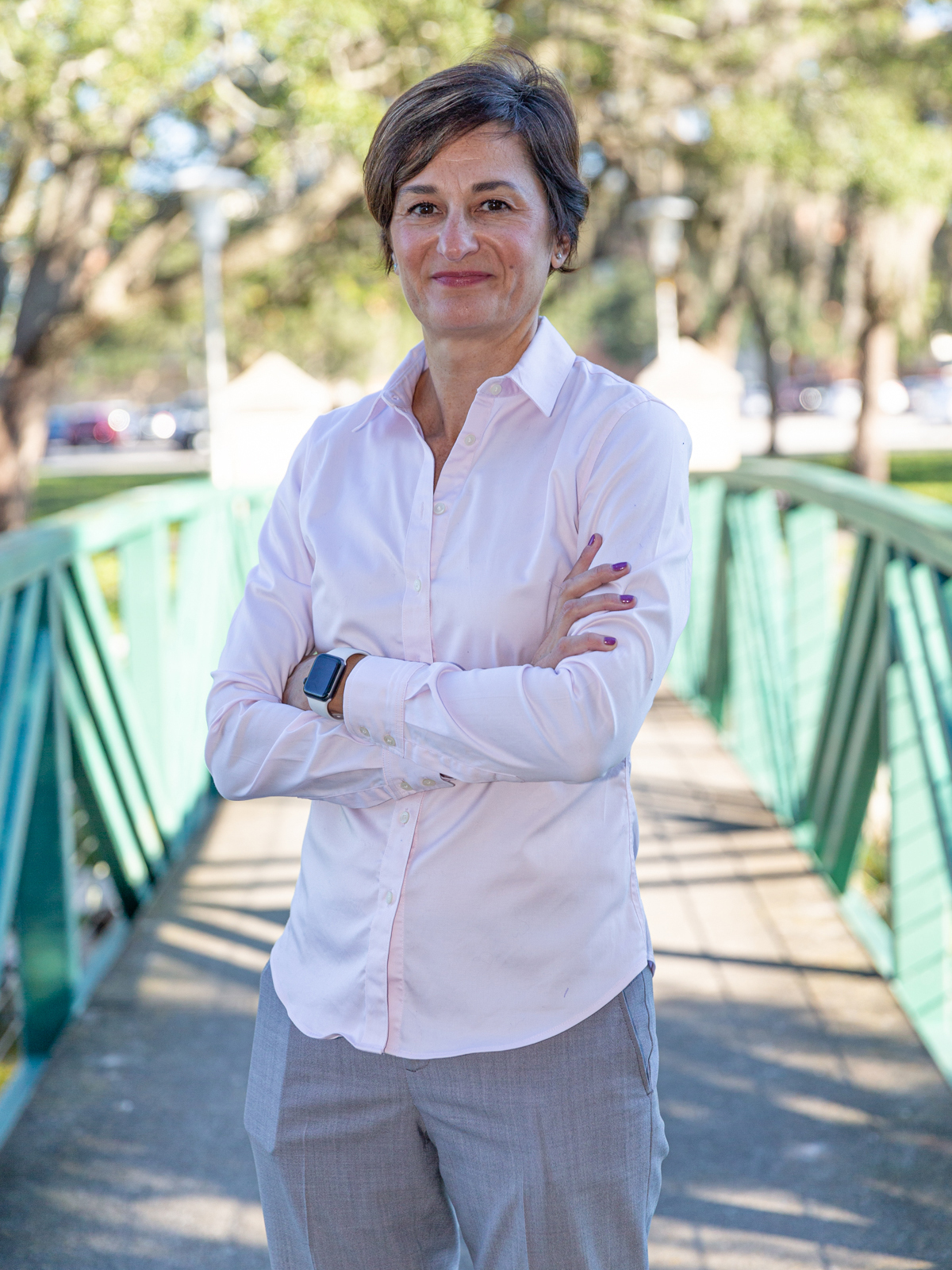Diversity of Thought Can Come with Challenges
For Moffitt Cancer Center to successfully achieve its mission, faculty and all team members need to embrace cultural diversity and strive to better understand one another. Culture refers to beliefs and customs of a particular society or group; a way of thinking, behaving or working within a particular place. When individuals with cultural differences aim to communicate, challenges are likely to occur.
In a survey of women faculty at Moffitt conducted in fall 2021, more than half the participants reported that differences in culture presented challenges for them. Challenges were experienced by individuals who grew up outside the United States, as well as individuals from various regions within the U.S.
Challenges reported include:
- Hesitation to speak up or voice opinions
- Feeling isolated; feeling like one does not belong
- Difficulty understanding slang expressions or meaning of jokes
- Unsure whether to speak up or to remain quiet in certain situations
- Difficulty being understood due to accent
- Feeling it necessary to work harder to prove oneself
At Moffitt, diversity is a priority. Initiatives established by the Enterprise Equity Department are meant “to promote a culture of diversity and inclusion as we contribute to the prevention and cure of cancer.” Enterprise Equity focuses its efforts on eliminating those obstacles to an individual’s ability to exist within their personal comfort zone at the cancer center. Everyone is important to meeting this priority. Addressing and responding to diversity and inclusion fosters an environment where mutual respect for diverse cultures, communication styles, languages, customs, beliefs, values, traditions, experiences and other ways in which we identify ourselves is the expectation.
It’s Not Just About Gender
Desirée Chachula, Ph.D., Ed.M., manager of Enterprise Equity & Inclusion at Moffitt, says women faculty have shared with her instances of communication differences. Being Venezuelan, she also has experienced such challenges. “Moffitt is an organization that is intentional about diversity within and among teams — it is a business advantage in every respect,” Chachula said. “With purposefully having people from different backgrounds work and problem solve together, communication differences are a given.”

When considering culture as a construct and attempting to define its components, most major theories use a spectrum with a “this versus that” approach, noted Chachula. “For example, individualism versus collectivism or assertive versus avoidance. Some of the older theories even include masculine versus feminine! Obviously, this is passe and inappropriate to us today, but I want to make the point that we operate in a culture that until relatively recently contrasted cross-cultural interactions in hyper gendered ways.” Certainly, gender does come into play but there is so much more to consider. “For example, a woman identifying faculty member waits to speak until more senior colleagues share their views due to her hieratical cultural norms. Other colleagues may erroneously interpret this as gendered ‘deference’ but it’s not at all. It’s related to position of authority.”
Prado Antolino, M.A., CT/CI, manager of Language Services, says she has encountered situations in which faculty have experienced communication challenges with patients due to cultural differences. “Some communication styles are rooted in culture and when the differences are great, it can create friction. And these situations are regardless of gender,” said Antolino.
“Without generalizing or stereotyping, American physicians can tend to be very straight to the point, whereas Hispanic patients often do not necessarily want to engage in answering questions in a back-and-forth manner. Rather, they often want to tell stories. And that can create a bit of impatience on the part of the physician asking a direct question and receiving an indirect answer,” said Antolino.
Antolino says she can relate to being direct because the culture where she came from in Spain involved being direct. “Realizing there are all sorts of Spaniards and without stereotyping or generalizing, my approach to communication has been very direct,” she said. “I have had challenges with that in particular, both in my workspace and in my personal space, because I’m direct. At times your audience does not accept that directness well and it is possible to be misunderstood.” She was quick to note that not all Spaniards have such an approach, and there are many subcultures within individuals who speak Spanish and are from Central and Latin America. Every individual carries their own culture.
Learning Sensitivity
Another area of misunderstanding centers on personal space. “The personal space for a Spaniard is a lot smaller than what it is for an American. When I was in grad school and working as a teaching assistant teaching Spanish to American freshman college students, I would approach them, and they would take a step back. When I stepped forward, they took another step back,” said Antolino. “Eventually I realized that space separation is very different from culture to culture.”
As Antolino observed these and other interactions, she began seeing things that she did not notice when she first came to the United States. “Even as I become acculturated and realized the culture here is slightly different and made conscious efforts to adjust, there were still areas that presented challenges.”

“I’ve learned that it is important to understand that we don’t all communicate the same way, rather than assuming that there’s an ill intention on the part of another person,” says Prado Antolino, manager of Language Services.
“The thing about culture is that we don’t notice it until we do. Until there is a glitch in the matrix or an instance of cross-cultural breakdown, we don’t feel its effects. That is unless we’re sensitive. Sensitivity is learned, it really is. It’s a skill that is learned through active listening, cross-cultural awareness, practicing humility and basically hacking your biased brain,” said Chachula.
Chachula has experienced cross-cultural challenges “often enough.” She looks inward when in a situation where there is an identifiable cultural communication opportunity. “The situation says just as much about my cultural norms and assumptions as my thought partner’s. I like to deconstruct those biases and defaults to help me better understand how I navigate the world.”
“I feel that being aware of yourself and how you’re contributing to the conversation is important. If in your gut you feel the conversation is not going the way you feel it should, then explore where the breakdown might be. I don’t have a magic bullet; sometimes it’s just asking questions. Even asking what they value in life,” said Antolino. Also, it is critical to not make assumptions or to stereotype. “And a kind gesture goes a very long way.”
Listen to Learn
“When people don’t have enough information, we tend to fill in the gaps with assumptions, stereotypes, prior experiences and sometimes defensiveness,” said Chachula. “Defensiveness is the worst knee jerk response because in situations of communication and cultural differences, it’s important to give the benefit of the doubt and realize that communication is co-constructed. If there’s a breakdown, it’s on both individuals. Listen to learn, utilize sincere curiosity when speaking, seek mutual clarity.”
“I’ve learned that it is important to understand that we don’t all communicate the same way, rather than assuming that there’s an ill intention on the part of another person,” said Antolino. “Always giving the benefit of the doubt to the other person is very helpful, I think, because sometimes the breakdown lies on simple things that if we took the time to find out where things went wrong, the outcome would be more positive. One helpful thing is to understand that our frame of reference is probably very different from the frame of reference of the person who is in front of us.”
As a diversity practitioner, Chachula says it is important to listen for commonality, connect the commonality in compassion and from compassion build a bridge to negotiation, while being mindful that communication takes two people. In the work setting when addressing a business problem or topic and all perspectives need to be heard, “investing in communicative competence leads to a better decision, resolution, direction and innovation.”


